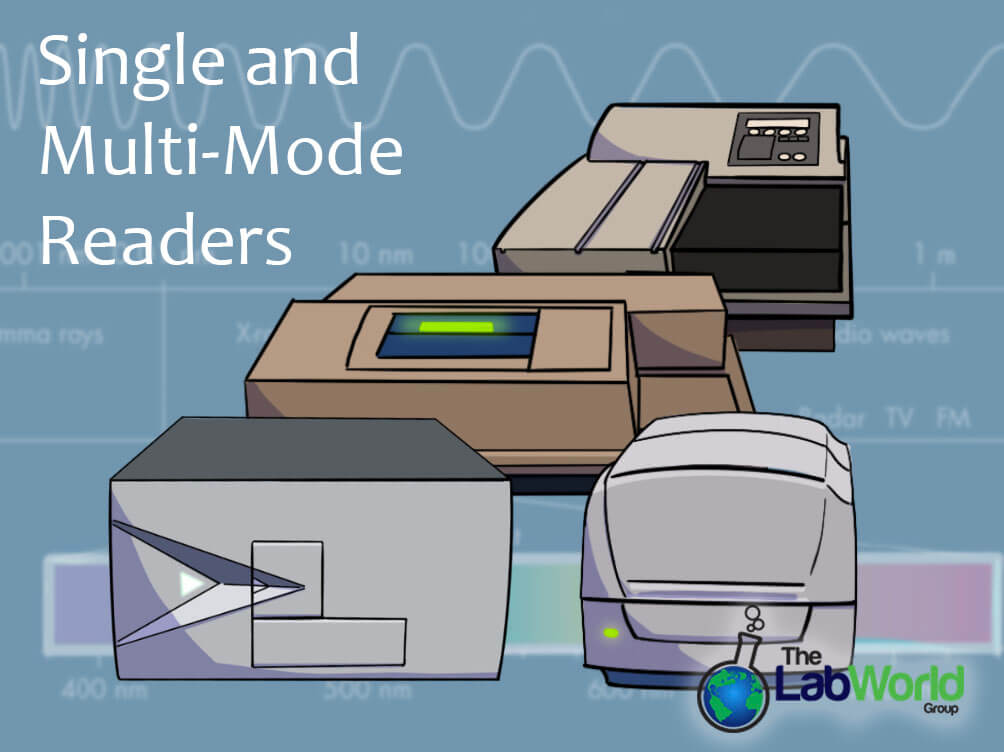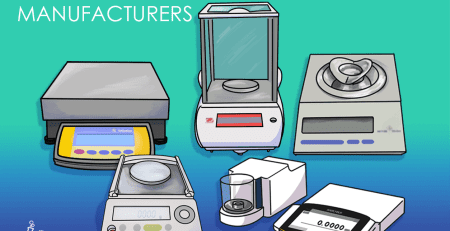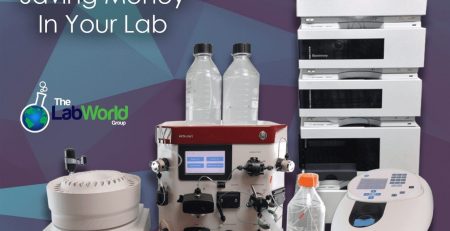
Microplate Readers and Their Functions
Amanda2021-08-27T16:10:41+00:00Previously, we’ve gone over the differences between a spectrophotometer and a microplate reader. In today’s article, we’ll dive deeper into what sets different plate readers apart, functions or modes. That gives you the basis for more of the type of machine you need and the advantages of a microplate reader. Now that you are confident you need a plate reader the first decision should really be which modes do you need to read. The main categories of a microplate reader being absorbance fluorescence luminescence.
Single-Mode vs. Multimode Plate Readers: What’s the right call?
Aside from project scope, one of the largest determining factors in narrowing the field of choices is cost. A single-mode dedicated instrument, generally, is going to be less expensive than one with multiple reading capabilities. Having a dedicated plate reader may be all that your project needs and can offer more precise results, while also freeing up funds for other critical pieces of lab equipment.
Microplate readers from makers like Tecan and Biotek are often modular, so even if you begin with a single-mode reader, chances are you can expand capabilities if your research needs change. That added flexibility can open a lot of possibilities. However, remember that adding in a module can often be very expensive as it requires an onsite visit from the manufacturer. The individual module is often more expensive afterward and the cost of installation is a new added cost.
You will want to consider a multimode plate reader if you have multiple users, a larger project, or even multiple projects going on simultaneously in your lab? Having a plate reader with multiple read options from the start helps future-proof projects and lets research continue uninterrupted. Being able to switch between modes also lets you collect multiple data points and get a more complete picture of the samples you’re working with. Multi-mode Microplate Readers can also save valuable bench space in the lab by housing everything in one footprint. By understanding how you and your coworkers are going to use the instrument day-to-day, you can determine what type of reader will best meet your needs.
What are the assays you need to perform?
The next question is what assays do you need to perform which will tell you what type of modes and sub-modes you may need in your plate reader. The most popular read modes tend to center on three functions, Absorbance, Fluorescence, and Luminescence. Some of these modes can be subdivided into even more specialized versions as well.
Absorbance Readers
Absorbance plate readers and UV-Vis readers send a specified wavelength of light through the plate well, this range can run from UV to Near-infrared or NIR. Molecules are then measured base on how much of that light they absorb. This detection method is most popular for assays such as Protein Quantification like ELISA assays, Cell viability Assays, and Microbial Growth Assays.
Fluorescence Plate Readers
Fluorescence Intensity signals are collected when a broadband light source is filtered by a selected excitation wavelength, that excites the fluorophore, or fluorescent chemical compound. In merely a nanosecond this fluorophore converts this wavelength into an emission wavelength, with kinetic energy and heat. Since the intensity is linear to the concentration of fluorophores, the detector can quantify the fluorescent molecules.
Other specialized fluorescent modes include Fluorescent Polarization, where polarized light is used to excite the molecule and can be used to detect the molecular weight. Smaller, lighter molecules depolarize the emission and move faster, whereas heavier molecules are slower and retain the polarization. Other techniques include Time-Resolved Fluorescence, where emissions last a millisecond instead of a nanosecond, and TF-FRET, closely related to time-resolved but where the proximity and transmission of energy between molecules is also a factor such as is the case in binding studies.
Luminescence Plate Readers
Luminescence readers collect emitted light that occurs without prior excitation of a molecule. Generally, this is a result of a chemical reaction, either spontaneously or from a catalyst. Since no excitation source is needed, a Luminesce reader does not need filters, only a sensitive detector. This mode can be used to offer further information about a molecule when partnered with other modes and can be used in assays such as cell viability, reporter assays, and BRET-based assays.
Other Microplate Reader Considerations
In addition to reading modes, there are a few last components to pay attention to. Signal measurements are taken with a detector, usually a photomultiplier tube or PMT. As the plate reader goes through its run, light signals are created and either biological, chemical, or physical changes are measured and used for analysis. PMTs take those photons and convert them to electricity to be quantified by the reader’s software. PMT capabilities can also include red sensitivity.
Other functions that can aid in cellular and enzyme assays are incubation and shaking. Incubation allows users to increase the temperature at key times or specific intervals so that temperature-sensitive assays can be executed all in one place. Shaking functions, usually across a range of speeds, directions, and durations. Shaking helps to keep conditions uniform across wells and to make sure items are mixed properly after an injection. Users generally can direct either orbit, double orbit, or linear shaking, as well as the intensity, customizing to the well size and liquid volume requirements.
Final Thoughts…
If your funding will allow you to future-proof your research project, starting with a multimode reader is an ideal way to go, that way as your needs change the flow can continue.
There are times where you already know what you’re looking for and the assays and kits you’ll be using throughout, in which case a single-mode, specialized microplate reader is all you need.
In either case, you can stretch your budget that much further by opting for a gently used microplate reader sourced by a reputable seller.
The plate readers offered for sale by The Lab World Group are put through rigorous quality checks and refurbishment processes. When they are ready for sale, we always provide current verification reports that show all components are up and running to factory specifications. Our inventory changes daily, so if you have a specific assay in mind but don’t see exactly what you need, let us know, we’re here to help!













